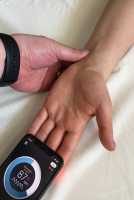Author Interviews, Heart Disease, JAMA, PAD, Stroke / 19.07.2018
USPSTF and PAD: Uncertain if Nontraditional Risk Factors Can Predict Heart Disease or Stroke Risk
MedicalResearch.com Interview with:
Dr. Michael Barry MD
Director of the Informed Medical Decisions Program
Health Decision Sciences Center at Massachusetts General Hospital
Physician at Massachusetts General Hospit
Professor of Medicine,Harvard Medical School
MedicalResearch.com: What is the background for this study? What are the main findings?
Response: Peripheral artery disease—which is known as PAD—is a disease that reduces blood flow to a person’s limbs, especially the legs. PAD can cause leg and foot pain when resting or walking, wounds to not heal properly, and loss of limbs. Additionally, people with PAD are more likely to experience a cardiovascular disease event, such as heart attack and stroke.
The U.S. Preventive Services Task Force looked at the latest research to see if screening people without signs or symptoms of PAD using the ankle brachial index (ABI) can prevent heart attack, stroke, or other adverse health effects. We found that more research is needed to determine if screening with ABI can help to identify PAD and/or prevent heart attack or stroke in people without signs or symptoms.
Additionally, in a separate recommendation statement, we looked into the effectiveness of what we call nontraditional risk factors for assessing a person’s risk of cardiovascular disease. Clinicians typically check someone’s risk for cardiovascular disease using traditional risk factors, such as age, race, and smoking status. The Task Force looked at the current evidence to see if three additional, nontraditional risk factors can help prevent heart disease or stroke. The nontraditional factors considered were ABI measurements, an elevated amount of high-sensitivity C-reactive protein (hsCRP) in the blood, and an elevated amount of calcium in the coronary arteries (CAC score).
In this recommendation, we also found that there is insufficient evidence to recommend for or against using nontraditional risk factors in addition to those normally used to assess cardiovascular disease risk in people without signs or symptoms. (more…)


